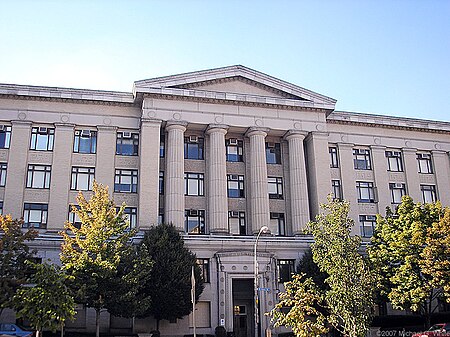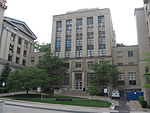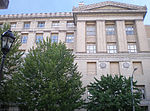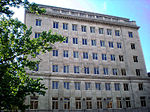Allen Hall (University of Pittsburgh)
Buildings and structures completed in 1915Greek Revival architecture in PennsylvaniaHistoric district contributing properties in PennsylvaniaNRHP infobox with nocatNational Register of Historic Places in Pittsburgh ... and 3 more
Pittsburgh History & Landmarks Foundation Historic LandmarksUniversity and college buildings on the National Register of Historic Places in PennsylvaniaUniversity of Pittsburgh academic buildings

Allen Hall at the University of Pittsburgh is a Pittsburgh History and Landmarks Foundation Historic Landmark and a contributing property to the Schenley Farms National Historic District. Completed in 1914 and originally serving as the home to the Mellon Institute of Industrial Research, the six story Greek Revival building designed by J. H. Giesey now serves as the home of the university's Department of Physics and Astronomy.
Excerpt from the Wikipedia article Allen Hall (University of Pittsburgh) (License: CC BY-SA 3.0, Authors, Images).Allen Hall (University of Pittsburgh)
O'Hara Street, Pittsburgh
Geographical coordinates (GPS) Address Website External links Nearby Places Show on map
Geographical coordinates (GPS)
| Latitude | Longitude |
|---|---|
| N 40.444588888889 ° | E -79.958327777778 ° |
Address
Allen Hall
O'Hara Street 3941
15213 Pittsburgh
Pennsylvania, United States
Open on Google Maps









